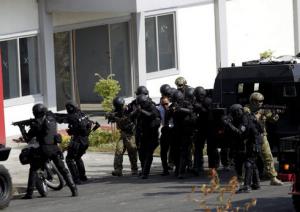TerrorismPsychology expert: Why extremists use violence in their quest for significance
The recent attack in New York, which left 29 persons wounded, the bombings in New Jersey and the knife attack in Minnesota serve as a grim reminder that this year of blood and fury carries on. Though incomprehensible to most, these instances of seemingly rampant violence have a compelling rhyme and reason to the perpetrators. They carry out their carnage in full premeditation and after careful preparation. Theirs isn’t crime of passion, or case of temporary insanity. It is, instead, a deliberately chosen path grounded in a confidently held worldview. Based on my research, violent extremism typically requires the presence of three elements that jointly create the terrorist mindset: what I call the “N-triad of radicalization.” The three N’s are need, narrative, and network. Though it might appear random and haphazard, the violence on streets of the world’s cities is psychologically coherent. The combination of individuals’ needs, narratives, and networks forms a combustible mixture ready to explode in mayhem and murder. Taking all three elements into account may offer a reasonable, science-based approach to preventing and reversing radicalization. It may be key to interventions and programs that can stem the tide of violent extremism that seriously threatens the world’s security and stability.

Extremist violence response training drill // Source: theconversation.com
The recent attack in New York, which left 29 persons wounded, the bombings in New Jersey and the knife attack in Minnesota serve as a grim reminder that this year of blood and fury carries on.
“We have every reason to believe this was an act of terror,” New York Mayor Bill de Blasio stated Monday afternoon in reference to the bombings and the suspected perpetrator’s Ahmad Khan Rahami’s arrest. Once again, we confront mayhem for no apparent reason. Attacks in diverse world locations including Paris, Brussels, San Bernardino, Istanbul, Baghdad, Jakarta, Orlando and Dhaka cumulatively compound the sense that the world is chaotic and unsafe. The idea that disaster can strike at any moment anywhere just at someone’s unfathomable whim increasingly insinuates itself into people’s minds.
Though incomprehensible to most, these instances of seemingly rampant violence have a compelling rhyme and reason to the perpetrators. They carry out their carnage in full premeditation and after careful preparation. Theirs isn’t crime of passion, or case of temporary insanity. It is, instead, a deliberately chosen path grounded in a confidently held worldview.
But to what end? And why through violence?
Based on my research, violent extremism typically requires the presence of three elements that jointly create the terrorist mindset: what I call the “N-triad of radicalization.” The three N’s are need, narrative, and network.
The first N is individuals’ need, which creates the quest to satisfy it by appropriate means. In the case of violent extremism, that need is one for personal significance, the desire to matter in one’s own eyes and those of significant others. Simply put, it is the universal yearning to have respect.
The second N is the ideological narrative that justifies violence and depicts it as an effective and desirable way to gratify the need.
The third N is the social network that validates the ideology and rewards its adherents.
Human quest for significance
The need, and consequent quest, for significance is typically aroused by a loss or lack of significance in the individual’s life and an opportunity to regain it. The loss may come from personal failure or from an affront to social identity: for instance, an insult to one’s identity as a Muslim, a discrimination against one’s identity as a Palestinian or a disdain aimed at one’s identity as an American.
